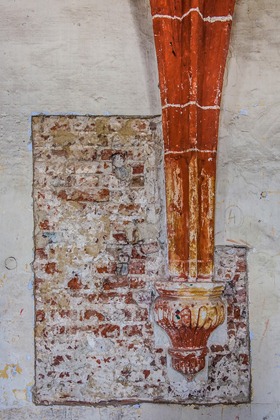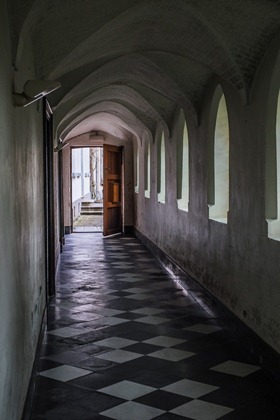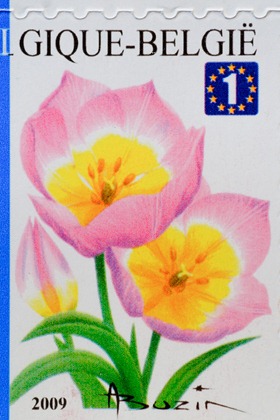The brand new X-Pro1 has been in my hands for two weeks now. There was (too) little time to take it through a full spin, but – other than the usual trial shots in and around the house – I took the camera out to two long photowalks (the recent Belgiumdigital Shooting Days in Antwerp and Oudenaarde). Here’s my first impressions and lessons learned.
 Beautiful color and tone rendition (with 35mm f/1.4)
Beautiful color and tone rendition (with 35mm f/1.4)
Handling
I shot with optical viewfinder film cameras before and have intensively used an X100 for a year, so this type of gear is not new to me. Picking up the X-Pro1 after the X100 gave me no issues whatsoever. The camera is slightly but pleasantly larger and heavier. It balances well with the 18mm and 35mm lenses (my 60mm copy is still to arrive). I went for the additional handgrip, and I like how it adds to the handling. It will probably show even more useful with longer and heavier glass. Of course, it will take some time before I can operate the X-Pro1 without taking my eye from the viewfinder: some controls moved position, and my fingers must learn to keep away from the Q button and the AF/MF dial. The more than complete feedback through the viewfinder (in both OVF and EVF modes) is of great help!
One serious issue in this area: the lack of eyesight adjustment. Based on technical limitations or in a misguided attempt to ‘go retro’ even more, Fuji’s engineers threw a spell on anyone wearing glasses while shooting – especially those with progressive lenses. We simply cannot get a complete sharp viewfinder image, even with funny head contortions… Replacing the standard neutral diopter with an appropriate correction lens is the only solution. These once common optical gizmos today are very hard to find (and out of stock at about every dealer that still carries them).
I ordered a +2D Voigtlander diopter (of Bessa fame) from a specialized UK shop. Even better: I got news today that it just shipped by air. I soon will find out whether manual focus with the electronic viewfinder is feasible (judging from how things work from the back LCD, I am not all too worried).
 Subtle nuances all over (with 18mm f/2.0)
Subtle nuances all over (with 18mm f/2.0)
Operation
I grew to love the X100 and learned to live with its ‘personality’. The X-Pro1 improves in many areas, so it performs even better as long as you keep a conscious and ‘forward thinking’ shooting style. I will not rely on this camera as the primary body for a fast-action or be-ready-for-anything situation, but I will happily take it there as my second one. If you know nothing else but über-automatic compacts or faster-than-you-can-think DSLRs, you might end up confused and disappointed. I for one enjoy the more determined and relaxed approach that both X-bodies promote.
I looooove the extensive manual controls, and consider the new Q (for quick) button a godsend. For a Nikon fanboy like me, changing lenses feels awkward at first: the unlock button and the direction of rotation are clearly ‘wrong’… The touch and feel of the lenses is excellent. I don’t understand why some people complain about their low weight: isn’t this kind of camera all about carrying smaller and lighter?
The aperture blade chatter was present but – to me – not overly irritating. It’s mostly gone now anyway after the 1.01 firmware update (thank you, Fuji-san, but were you really surprised?).
The battery capacity could be better, so far I cannot or just hardly make it through a full day of varied shooting (note that I do keep Power Save off and Quick Start on). Maybe battery life will improve after a few more charging cycles. The spare battery on my original order (still not delivered) will be more than welcome. Actually, I intend to buy an extra one from whatever dealer or webshop that can supply now.
 Sizzle and detail (with 18mm f/2.0)
Sizzle and detail (with 18mm f/2.0)
Image quality
As said before, I did not take the X-Pro1 through a full battery of tests - and probably never will. I did attempt to grab as many different types of shots as possible during the recent field trips.
I very much like everything I’ve seen so far. The 18mm lens is perfectly sharp, and the 35mm even more. The images are full of crisp detail, white balance is as correct as can be expected. Colors are Fuji-great, tonal range stunning. The X-Pro1’s images generally stand up to – correct that, often look better than – those from anything else I shoot with, including my trusted D700. No little feat.
 A dynamic range with room to stretch (with 35mm f/1.4)
A dynamic range with room to stretch (with 35mm f/1.4)
Remember, all you see here comes from JPG files produced by the camera. No RAW file support for the X-Pro1 yet in Lightroom nor Aperture, and the bundled Silkypix software shows nothing that prompts me go through another learning curve. The quality of the out-of-camera JPG images is top-notch though! So far I did not experiment with the available conversion settings to get the results even closer to my taste. Rather, I leave all settings on ‘neutral’ and make minor adjustments in Lightroom, as usual.
 Plug’em to your taste (with 35mm f/1.4)
Plug’em to your taste (with 35mm f/1.4)
Post-processing
Lightroom 4 is just great to explore and exploit the boundaries of your image data. The X-Pro1 images perfectly behave through all kinds of manipulations. Insofar those are required, beyond a basic cropping, contrast boost and occasional color twist. Obviously, JPG files come with less tweaking latitude than RAWs, so I shoot RAW+JPG and save the RAW files for later, Adobe permitting.
The JPGs are also fit for processing by your preferred plug-ins. The image above got a dash of Nik Software’s Color Efex Pro 4.
 Getting close (with Tamron 90mm f/2.8)
Getting close (with Tamron 90mm f/2.8)
More fun to come
As with most compact system cameras, the X-Pro1 lenses are designed to come very close to the sensor. That setup – getting rid of the deep mirror box of a DSLR – leaves room for an adapter accepting lenses from another camera system. No doubt the current Fujinon lenses will outperform most of the old ones with similar focal length, but beyond that there’s macro, fisheye, portrait, long tele…
I already received a Chinese Kippon adapter for Nikon F lenses, and a lot of manual focus and AF-D lenses – some dating back to the 70s – are waiting to make a pass at the X-Pro1. The well-known Tamron 90mm f/2.8 macro lens was one of the first to get mounted. The example above shows part of a postage stamp (original size about 20 x 30 mm).
A newer Kippon adapter for Nikon G-type lenses (without an aperture control ring) is already in transit from Hong Kong, soon to be joined by yet another adapter for Leica 39mm screw mount glass (I am lucky to own a few of those built around WWII).
Hope to see you back when there’s more to report!
Gear notes: Fujifilm X-Pro1, Fujinon XF 18mm f/2.0 & 35mm f/1.4,
Tamron 90mm f/2.8 SP Di
Click on the image(s) to see a larger version

No comments:
Post a Comment